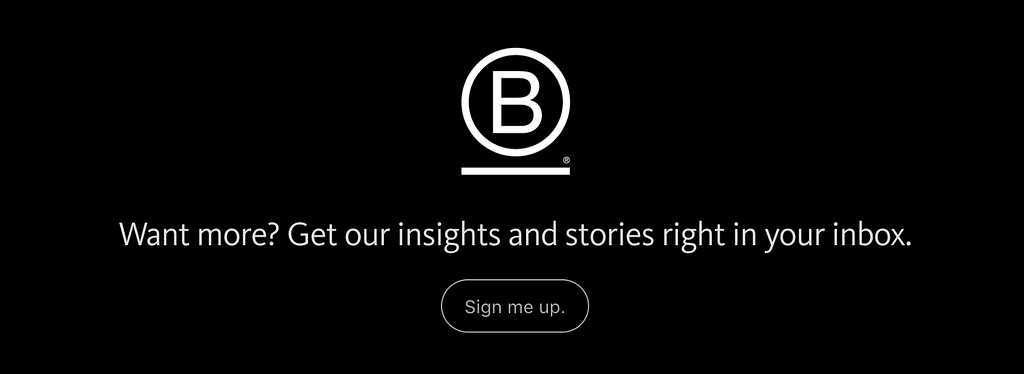Lessons on Empowerment, Message Creation, and Mobilization from Community Organizers, Activists, and Social Workers

Building and maintaining a strong stakeholder engagement strategy is key for any business’s success. Taking an interdisciplinary approach to stakeholder engagement by looking at the work of community organizers, activists, and social workers can be helpful, particularly when it comes to engaging stakeholders around our social and environmental values. Below are a few lessons on empowering, crafting a message, and mobilizing from these professions that can be applied to stakeholder engagement.
Lessons on Empowering
Approach those you serve as a journalist, not an expert.
In social work we talk a lot about being mindful of power dynamics and empowering clients to be the expert of their own experience. To do so, we approach the client as a journalist looking to understand, and then help them access the resources they need (whether that’s you or a better-suited partner) to amplify their voice as an advocate. It’s actually quite stress-relieving not having to always show up as an expert and guess what the client wants to hear. Just listen. Similarly, we can do so in business with our stakeholder relationships (e.g. employees, customers, partners, planet, communities), which brings me to the next point …
Realize that those closest to the problem often have the solution but are farthest from the resources.
Paolo Freire said:
Attempting to liberate the oppressed without their reflective participation in the act of liberation is to treat them as objects which must be saved from a burning building.
It goes back to empowerment. Are we empowering our partners and clients or imposing what we think is best on them? In Native Organizing Before the Non-Profit Industrial Complex, Native American civil rights activist Madonna Thunder Hawk reminds us to be mindful of these paternalistic tendencies (i.e. an organization from outside a community coming in to help but deciding how funding should be used, rather than letting the affected community choose how the funds are spent). Although Thunder Hawk is referring to the nonprofit sector, I think it’s something to be mindful of within the social mission work of businesses, too.

Lessons on Crafting a Message
Speak in a way for all to understand.
Buzzwords and over-intellectualized speech can help us be more illustrative with fewer words (and feel more competent), however, they also decrease the potential audience and exclude communities. Not everyone has the same understanding, education, language proficiency, or perspective.
Remember 27–9–3.
The 27–9–3 is a framework commonly used in advocacy for crafting effective messaging: Use no more than 27 words, within 9 seconds or less, and discuss no more than 3 issues/ideas. The framework helps us communicate more effectively and deliver messaging our audience will remember.
Use the 4 C’s.
There seems to be many “4 C’s” or “7 C’s” of communication. But a great advocacy professor of mine shared that when crafting messaging with a call to action, the messaging should be Clear, Concise, Concrete, and Contrasting. Messaging that mobilizes people highlights to them the difference between their current reality and the reality you want to help them attain.

Lessons on Mobilizing
Develop credibility.
For many businesses, the importance of credibility is well understood — gathering noteworthy customer/partner logos for the website, producing strong case studies, and showcasing positive testimonials. However, mobilizing stakeholders around mission-driven work and becoming stewards of what we stand for is a little different. It takes consistency in actions, investing in relationships, putting our money where our mouth is, and showing authenticity by doing things that don’t have a direct return on investment. And lastly …
Highlight what unites people.
Finding common ground, or highlighting what makes different groups collectively interested in a cause, is a powerful part of mobilizing. We saw it during the recent Dakota Access Pipeline Protests where Native Americans, civil rights advocates, environmentalists, U.S. military veterans, and many others were united by a collective interest in protecting Indigenous land. During the Prisoners’ Rights Movement, we saw it with George Jackson, who was influential in educating and creating solidarity among the prison population around the oppression they were collectively experiencing — leading to important prisoner rights reform and public awareness. Another example was Judy Heumann, who brought together the disability community and civil rights advocates, such as the Black Panthers, during the Section 504 sit-in — resulting in legal protection for people with disabilities from discrimination within federally funded programs. Each of these examples highlight the importance of understanding the unique differences of your stakeholders, the larger picture, and mobilizing your stakeholders around what connects them.
B The Change gathers and shares the voices from within the movement of people using business as a force for good and the community of Certified B Corporations. The opinions expressed do not necessarily reflect those of the nonprofit B Lab.

How Businesses Can Take an Interdisciplinary Approach to Stakeholder Engagement was originally published in B The Change on Medium, where people are continuing the conversation by highlighting and responding to this story.